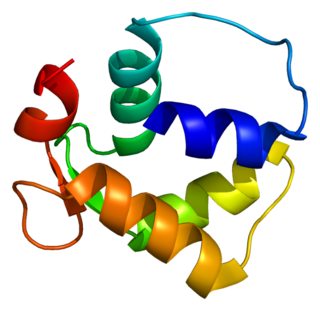| HEPACAM2 | |||||||||||||||||||||||||||||||||||||||||||||||||||
|---|---|---|---|---|---|---|---|---|---|---|---|---|---|---|---|---|---|---|---|---|---|---|---|---|---|---|---|---|---|---|---|---|---|---|---|---|---|---|---|---|---|---|---|---|---|---|---|---|---|---|---|
| Identifiers | |||||||||||||||||||||||||||||||||||||||||||||||||||
| Aliases | HEPACAM2 , MIKI, HEPACAM family member 2 | ||||||||||||||||||||||||||||||||||||||||||||||||||
| External IDs | OMIM: 614133 MGI: 2141520 HomoloGene: 18724 GeneCards: HEPACAM2 | ||||||||||||||||||||||||||||||||||||||||||||||||||
| |||||||||||||||||||||||||||||||||||||||||||||||||||
| |||||||||||||||||||||||||||||||||||||||||||||||||||
| |||||||||||||||||||||||||||||||||||||||||||||||||||
| |||||||||||||||||||||||||||||||||||||||||||||||||||
| |||||||||||||||||||||||||||||||||||||||||||||||||||
| Wikidata | |||||||||||||||||||||||||||||||||||||||||||||||||||
| |||||||||||||||||||||||||||||||||||||||||||||||||||
HEPACAM family member 2 is a protein that in humans is encoded by the HEPACAM2 gene. [5]
| HEPACAM2 | |||||||||||||||||||||||||||||||||||||||||||||||||||
|---|---|---|---|---|---|---|---|---|---|---|---|---|---|---|---|---|---|---|---|---|---|---|---|---|---|---|---|---|---|---|---|---|---|---|---|---|---|---|---|---|---|---|---|---|---|---|---|---|---|---|---|
| Identifiers | |||||||||||||||||||||||||||||||||||||||||||||||||||
| Aliases | HEPACAM2 , MIKI, HEPACAM family member 2 | ||||||||||||||||||||||||||||||||||||||||||||||||||
| External IDs | OMIM: 614133 MGI: 2141520 HomoloGene: 18724 GeneCards: HEPACAM2 | ||||||||||||||||||||||||||||||||||||||||||||||||||
| |||||||||||||||||||||||||||||||||||||||||||||||||||
| |||||||||||||||||||||||||||||||||||||||||||||||||||
| |||||||||||||||||||||||||||||||||||||||||||||||||||
| |||||||||||||||||||||||||||||||||||||||||||||||||||
| |||||||||||||||||||||||||||||||||||||||||||||||||||
| Wikidata | |||||||||||||||||||||||||||||||||||||||||||||||||||
| |||||||||||||||||||||||||||||||||||||||||||||||||||
HEPACAM family member 2 is a protein that in humans is encoded by the HEPACAM2 gene. [5]
This gene encodes a protein related to the immunoglobulin superfamily that plays a role in mitosis. Knockdown of this gene results in prometaphase arrest, abnormal nuclear morphology, and apoptosis.
Poly (ADP-ribosylation) of the encoded protein promotes its translocation to centrosomes, which may stimulate centrosome maturation. A chromosomal deletion including this gene may be associated with myeloid leukemia and myelodysplastic syndrome in human patients.

G-protein coupled receptor family C group 5 member D is a protein that in humans is encoded by the GPRC5D gene.

Olfactory receptor 6K2 is a protein that in humans is encoded by the OR6K2 gene.

Olfactory receptor 51F2 is a protein that in humans is encoded by the OR51F2 gene.

Olfactory receptor 6B2 is a protein that in humans is encoded by the OR6B2 gene.

Olfactory receptor 52N2 is a protein that in humans is encoded by the OR52N2 gene.

Olfactory receptor 8H2 is a protein that in humans is encoded by the OR8H2 gene.

Olfactory receptor 2G6 is a protein that in humans is encoded by the OR2G6 gene.

Olfactory receptor 9K2 is a protein that in humans is encoded by the OR9K2 gene.

Centrin-1 is a protein that in humans is encoded by the CETN1 gene. It belongs to the centrin family of proteins.

Tubulin, epsilon 1 is a protein in humans that is encoded by the TUBE1 gene. This gene encodes a member of the tubulin superfamily. This protein localizes to the centriolar sub-distal appendages that are associated with the older of the two centrioles after centrosome duplication. This protein plays a central role in organization of the microtubules during centriole duplication

Solute carrier family 25, member 16 is a protein in humans that is encoded by the SLC25A16 gene.

Inositol monophosphatase 3 also known as inositol monophosphatase domain-containing protein 1 (IMPAD1) is an enzyme that in humans is encoded by the IMPAD1 gene.

Monocarboxylate transporter 6 (MCT6) is a protein in humans that is encoded by the SLC16A5 gene.

Kizuna centrosomal protein is a protein that in humans is encoded by the KIZ gene.

Left-right determination factor 2 is a protein that in humans is encoded by the LEFTY2 gene.

Solute carrier family 17 member 9 is a protein that in humans is encoded by the SLC17A9 gene.

Solute carrier family 38 member 5 is a protein that in humans is encoded by the SLC38A5 gene.

Forkhead box S1 is a protein that in humans is encoded by the FOXS1 gene.

Centrosomal protein 85 is a protein that in humans is encoded by the CEP85 gene.

Solute carrier family 22 member 14 is a protein that in humans is encoded by the SLC22A14 gene.
This article incorporates text from the United States National Library of Medicine, which is in the public domain.